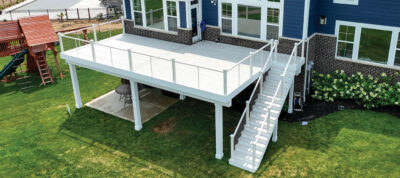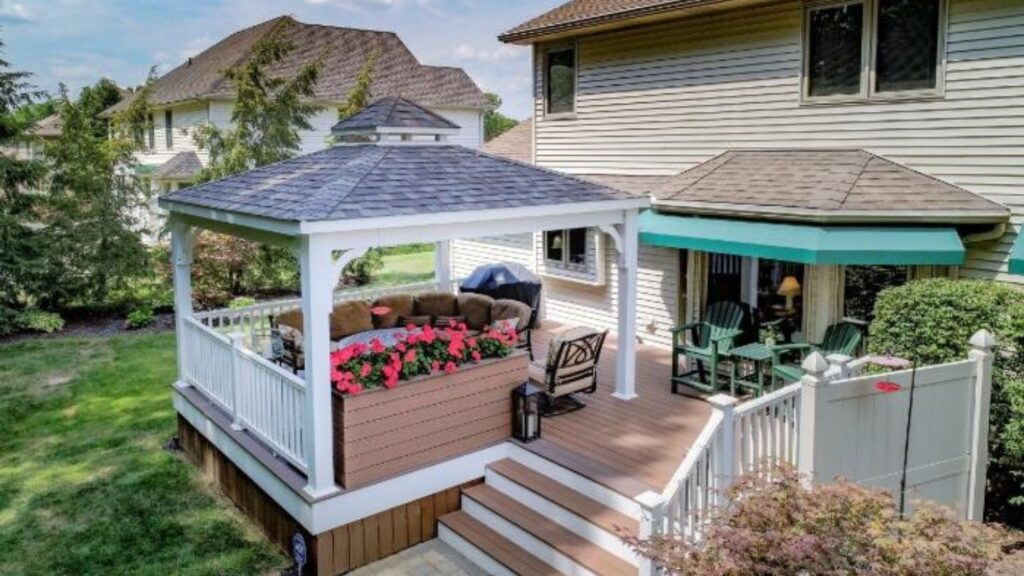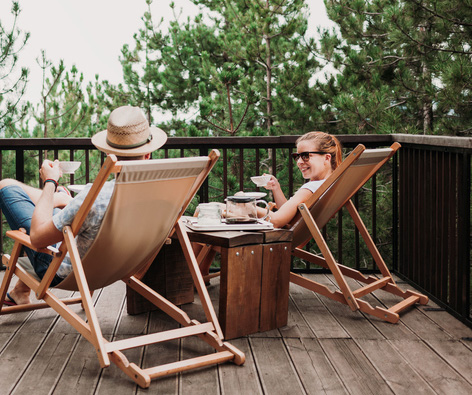A few weeks ago we exhibited at the Great Big Home and Garden Show in Cleveland at the IX Center. With the show over and our display all packed up, one particular feature that we displayed received a lot of interest; a stainless-steel cable-rail system.
For those of you not familiar with it, this system is made of stainless braided cables that are spanned horizontally. I say horizontally since it’s the most common way, although there are systems where the cables run vertically as well. The vertical cable systems are not very common. The horizontal direction gives the railings a different look than your traditional vertical balusters. This elongated, sleek, clean, “no-frills” look pairs well with a more modern and contemporary look and feel but it’s not limited to that alone. We have used it on traditional, rustic, and costal homes. It fuses well with a lot of styles, since there are small details that can be added for additional pull. For example, the rail structure (posts, top, and bottom rails) can be ordered in white and can be detailed to obtain that “traditional” railing look while incorporating the stainless cables.
The most common way we install these is in a black powder-coated aluminum railing system. The aluminum offers the longevity and easy maintenance since it’s rust-free. More importantly, it allows the railing members to be a smaller/thinner profile which adds to the minimalistic feel. With the aluminum, there are a lot of color options available and it’s easily customizable. Another great finish on the aluminum systems is to add a top cap of low-maintenance decking or wood to give it a “cocktail-rail” feel.
Besides the aesthetic appeal another major reason our customers gravitate towards a cable rail is that it is un-obtrusive to the view. If you are next to a lake or have a setting where you don’t want to impede your view, this is a great choice. The cables are generally 3/16” diameter so they are quite thin and disappear into the background. The cables will also require much less maintenance than would a tempered glass rail. Tempered glass rails also work well, but require more cleaning than the cable-rail does.
In most instances, cable-rail systems are more expensive than the traditional railing systems. One way to help reduce the cost of the overall project is to reduce the number of railing turns in the deck design. Every time you stop or turn the cables, special hardware is required that increases the cost. We have seen a slight decrease in these rail systems as this sector of railing grows. Hopefully, there is more of that on the way as more manufactures enter this sector.
Lastly, please consider the fact that the cables will run horizontally. This will now create a “ladder” effect on the railing; something a child could climb. This is not a good system if you have little children that can climb. Some municipalities do not allow horizontal rail systems for this reason, so check with your local building official before making plans.





